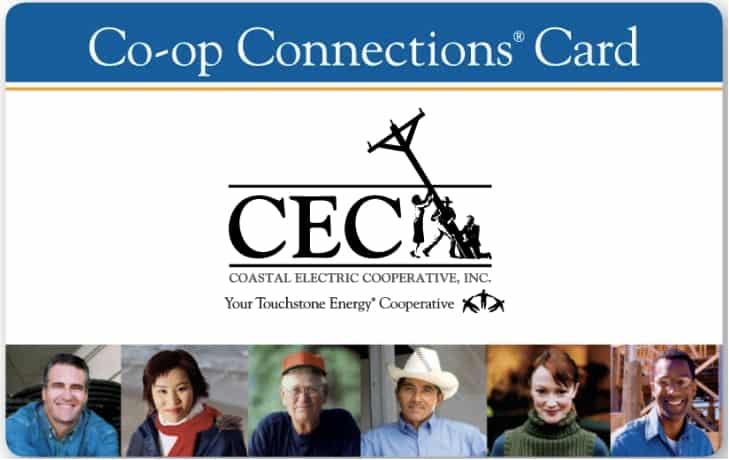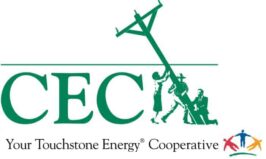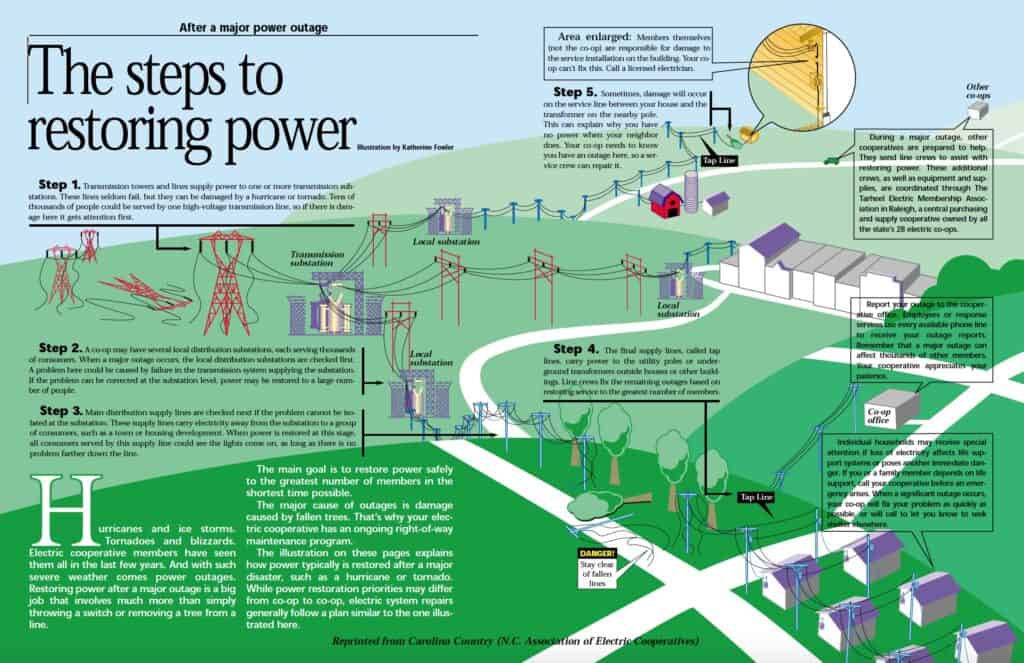
Experience savings on restaurants, golf, shopping, travel, family fun, automotive, movies, insurance… everything you can imagine is here. Co-op Connections has the best deals all in one place.
Power Restoration
When the power goes out, most of us expect it to come back on within a few hours. But sometimes major storms cause widespread damage, and outages can last longer than expected. The good news is that your electric co-op’s line crews work long, hard hours to restore service safely to the greatest number of members — that’s you - in the shortest time possible. Ever wonder how they do it? Well, there are four steps to restoring power that we should all know about, especially when we find ourselves in the dark.
Step one: repair high-voltage transmission lines. Transmission towers and lines supply power to thousands of members. They rarely fall, but when they do, they must be repaired first before other parts of the system can operate. Step two: inspect distribution substation. Distribution substations receive high voltage power from transmission lines, then disperse that power at a lower voltage to the co-op’s main distribution lines.
Depending on your electric co-op service territory, distribution substations can serve either hundreds or thousands of members. When a major power outage occurs, the co-op’s line crews inspect the substation to determine if the problem stems from the transmission line speeding into the substation, the substation itself, or if the problem is further down the line. Step three: check main distribution lines. If the problem cannot be isolated at a distribution substation, the main distribution lines are checked first. These lines carry power to large groups of members in your electric co-op’s service territory. Step four: examine tap lines. If local outages persist, supply lines called tap lines are examined.
These lines deliver power to transformers that are either mounted on poles or placed on pads for underground service, and can be found outside of homes, businesses and schools. Occasionally, damage will occur on the service lines between the nearest transformer and your home. Has your neighbor ever had power while yours is out? That is why, when the problem is in the tap lines, co-op line crews will fix outages in an order that will restore service to the greatest number of members at a time. As you can see, restoring power after a major outage is a big job and involves much more than simply flipping a switch or removing a tree on a damaged line.
When co-ops work to restore power, they often have the capability to work on multiple parts of the system simultaneously. This ensures reliable power with a faster response time. In the event of an outage, your local line crews will restore power safely to the greatest number of members in the shortest time possible and we’ll keep working until the lights go back on. As always, we appreciate your patience and your business.
Restoring power after widespread outages is a big job that involves more than simply throwing a switch or removing a tree from a line. It involves a huge coordination effort with possibly hundreds of linemen, tree trimmers, and office personnel working in very dangerous situations. There is nothing routine when restoring power after a storm.
During an outage, Coastal Electric is committed to restoring the electric power to all co-op accounts as safely and quickly as possible. In this effort, our overriding goal is to safely restore power to the greatest number of members in the shortest time possible. In order to accomplish that, the process begins with a damage assessment of the co-op’s lines and facilities by employees who have been specifically trained to accomplish those tasks. The assessment allows the co-op to direct its resources (both labor and materials) to the areas where they are needed the most.
Repairs are first made to the co-op’s large transmission lines which carry high-voltage electricity to our distribution system from generation stations. Lines such as these must be repaired first along with any damage to transmission substations. Transmission lines serve many thousands of accounts.
Next in the process of restoration of power are the distribution substations and their respective main feeder lines. The co-op has 13 substations on its system and there are just under 2,000 miles of distribution and service lines that are routed from the substations. Main feeder lines are those that you normally see alongside a highway.
Individual tap lines are repaired next in the restoration process. Tap lines typically serve the fewest number of members.
Safety is our highest priority during any power restoration situation. Sometimes you will notice your lights going back off shortly after they have come back on. In some cases, it is necessary to remove power from an energized section in order to safely repair any damages or replace transformers or other line equipment. Most times the power will come back on once the repair is made. In other cases, your power may go off because it is a legitimate outage. When in doubt, you can always call 843–538-5800 to re-report the new outage.
The Steps to Restoring Power [PDF]
Hurricanes and ice storms. Tornadoes and blizzards. Electric cooperative members have seen them all in the last few years. And with such severe weather comes power outages. Restoring power after a major outage is a big job that involves much more than simply throwing a switch or removing a tree from a line.
The main goal is to restore power safely to the greatest number of members in the shortage time possible.
The major cause of outages is damage caused by fallen trees. That your electric cooperative has an ongoing right-of-way maintenance program.
The illustration above explains how power is typically restored after a major disaster, such as a hurricane or tornado. While power restoration priorities may differ from co-op to co-op, electric system repairs generally follow a plan similar to the one illustrated here.
Step 1. Transmission towers and lines supply power to one or more transmission substations. These lines seldom fail, but they can be damaged by a hurricane or tornado. Tens of thousands of people could be served by one high-voltage transmission line, so if there is damage here it gets attention first.
Step 2. A co-op may have several local distribution substations, each serving thousands of consumers. When a major outage occurs, the local distribution substations are checked first. A problem here could be caused by a failure in the transmission system supplying the substation. If the problem can be corrected at the substation level, power may be restored to a large number of people.
Step 3. Main distribution supply lines are checked next if the problem cannot be isolated at the substation. These supply lines carry electricity away from the substation to a group of consumers, such as a town or housing development. When power is restored at this stage, all consumers served by this supply line could see the lights come on, as long as there is no problem further down the line.
Step 4. The final supply lines, called tap lines, carry power to the utility poles or underground transformers outside houses or other buildings. Line crews fix the remaining outages based on restoring service to the greatest number of consumers.
Step 5. Sometimes, the damage will occur on the service line between your house and the transformer on the nearby pole. This can explain why you have no power when your neighbor does. Your co-op needs to know you have an outage here, so a service crew can repair it.
Reprinted from Carolina Country (N.C. Association of Electric Cooperatives)


